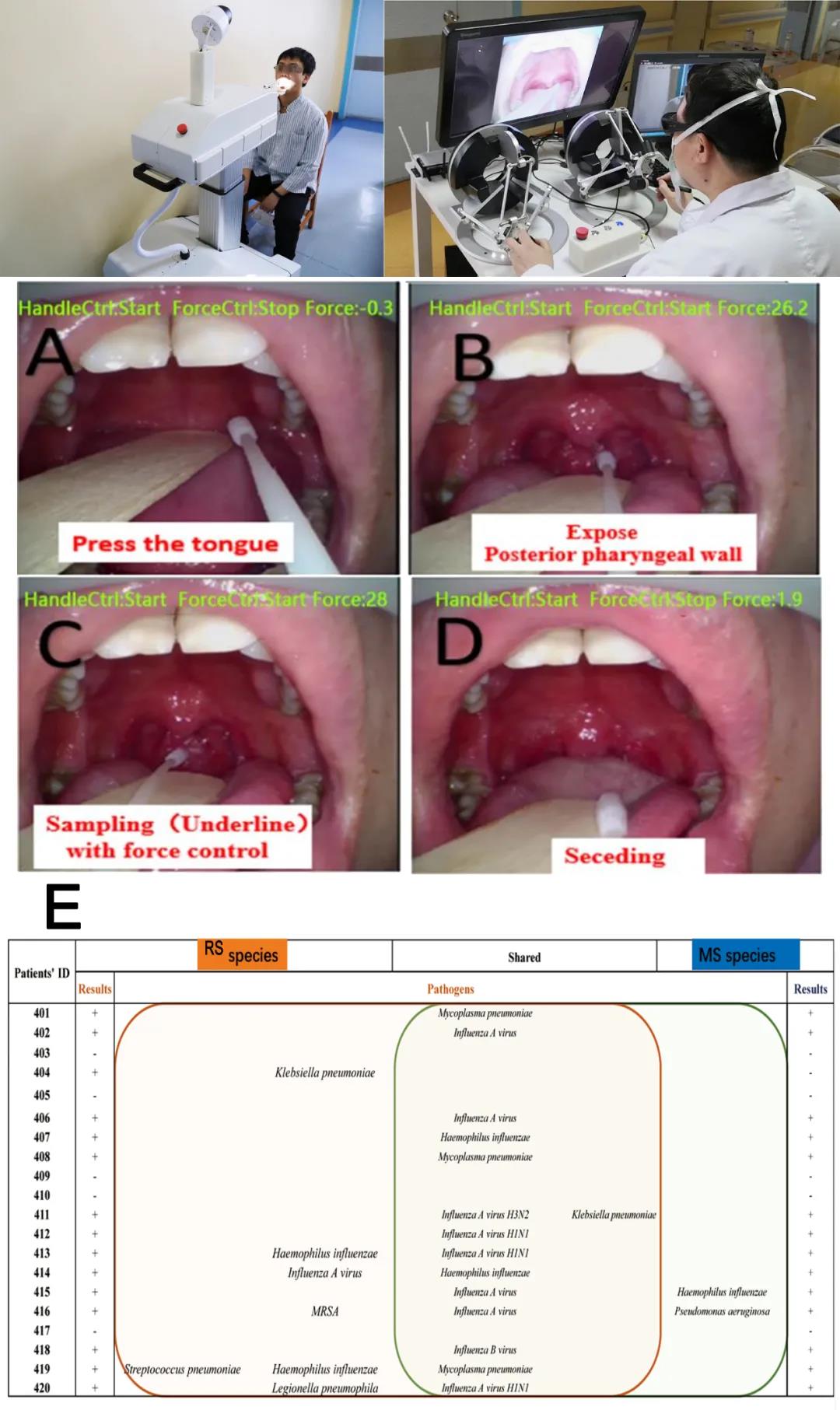The Team Led by Academician Nanshan Zhong Publishes at ERJ the Application of Intelligent Throat Swab Robot in Covid-19 Pandemic
2020-08-131064The novel coronavirus broke out in China in December 2019. Because of its high infectivity, medical staff in close contact with patients are prone to secondary cross-infection after collecting throat swab samples. At the same time, because of panic and uneven collection level, the false negativeness of throat swabs deserves our attention. The team led by the academician Nanshan Zhong and the team led by Hao Liu, a research fellow from Shenyang Institute of Automation, Chinese Academy of Sciences, went deep into the clinical front line during the most serious outbreak of the pandemic, and jointly developed the intelligent throat swab robot based on the above problems faced. 1. Further protect medical staff from cross-infection; 2. Establish a standardized collection process for the robots to unify the collection quality. Comparing the quality of manual collection and machine collection, it is found that the quality of swab collected by machine is not inferior to that of manual collection. The equipment is used in the fever clinic and isolation ward of SKLRD. Related reports have been recognized by peers at home and abroad, and a relevant paper has been published in international authoritative journal (IF 12.3), with Professor Shiyue Li as the corresponding author.
This study is the first study in the world to report the application of automated intelligent throat swab robot to collect samples of suspected / confirmed patient throat swabs (related patents were registered in March 2020). This study has developed an intelligent throat swab robot based on the standardized swab collection process of Guangzhou Institute of Respiratory Disease and the automatic intelligent manipulator technology of Shenyang Institute of Automation.
The system’s advantages are as follows.
1.The collector can collect throat swab samples of suspected / diagnosed patients by remote control collection robot to further protect medical staff and reduce cross infection.
2.At the same time, through clinical application and research, we found that the optimal collection strength of throat swab can be controlled within a range of optimal strength with a manipulator to reduce the adverse reaction caused by excessive force or a poor quality due to too little force.
3.The most important thing is that robot collection is not inferior to manual collection, whether in quality of swabs collected or the discovery of pathogens. Conclusion: The throat swab collection of intelligent robot can be effectively applied in clinic practice. (See the picture below)

















